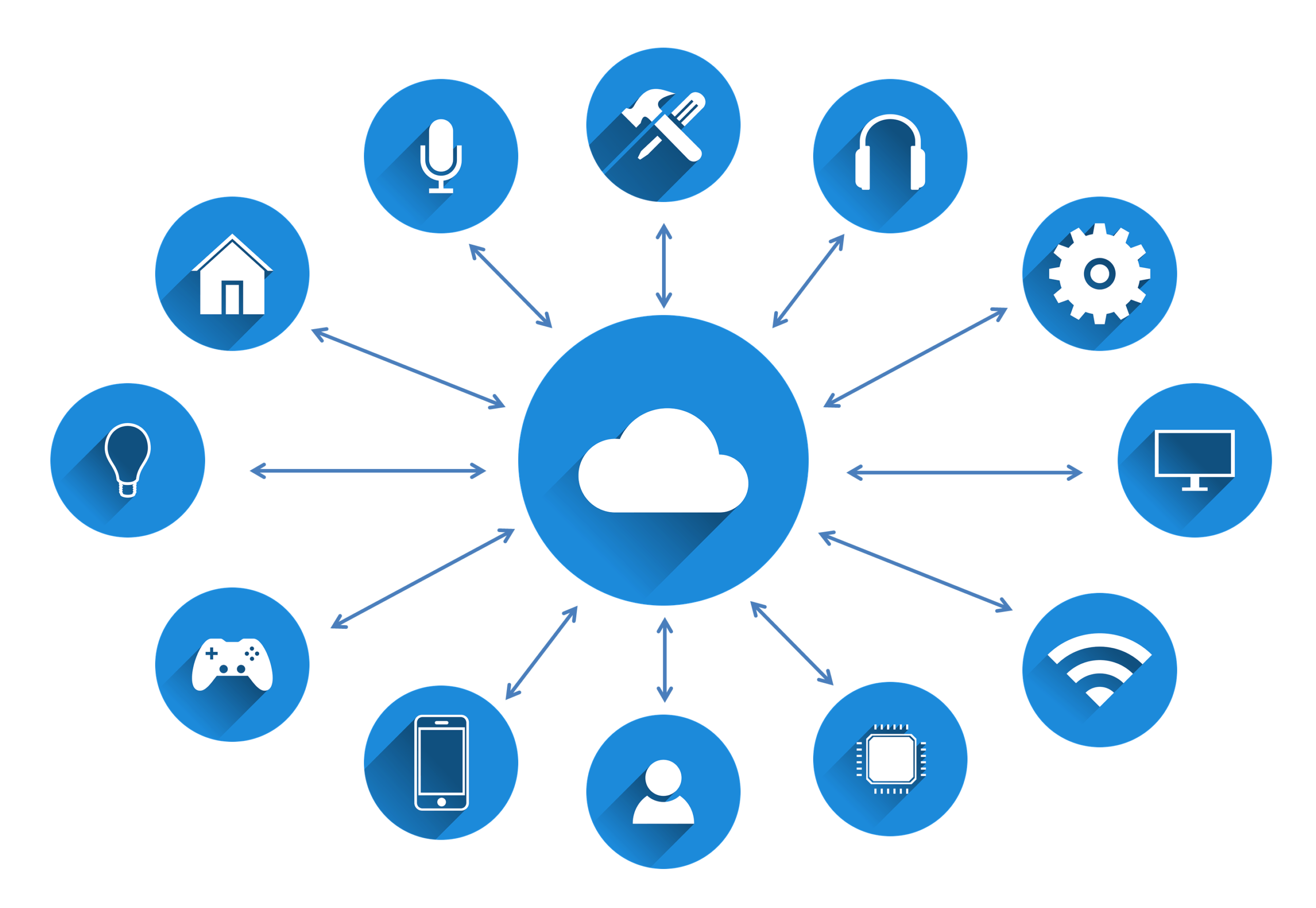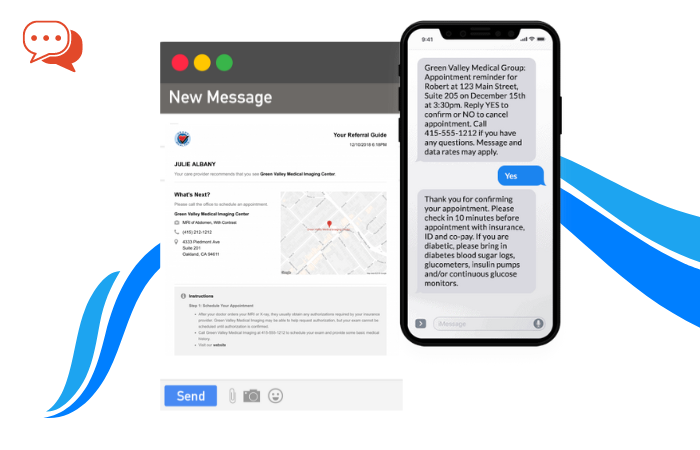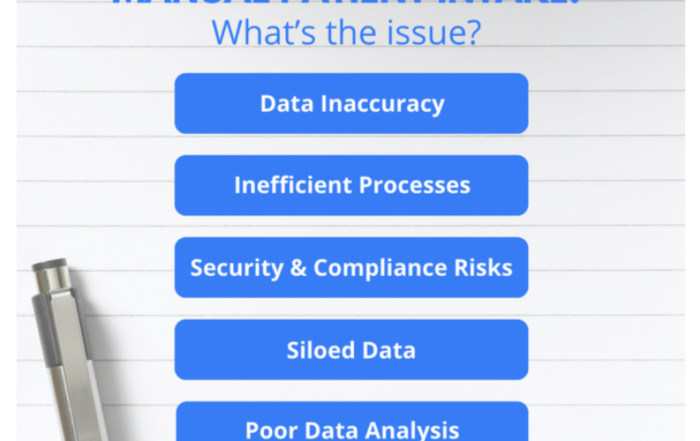Blockchain has become of great interest to organizations that handle patient data. One of the core ways that it is being applied is within the Internet of Health Things (IoHT). This article discusses Blockchain and IoHT and why they are so closely integrated.
What is blockchain?
Blockchain does not have as long a history as the IoHT does. However, it is quickly becoming prominent because it allows you to produce and securely send long-term, immutable transaction logs.
You can introduce new data to a blockchain, but you cannot alter or revise the data that is already stored within its blocks. In that sense, technology is a transaction ledger that is append-only. This structure is enforced because of cryptography that is used to connect data within blocks to data within adjacent blocks. Due to the interdependency of the blocks, when you make alterations to any block within the chain, all blocks that are after it in the chain become illegitimate.
Blockchains develop based on the consensus of members. Whenever anyone adds to the blockchain, you have to compete to solve a mathematical proof. These results are shared with a large number of computers within the network. The computers that are connected to the network should all have a consensus agreement on the solution.
Since there is this collaborative assessment of whether new data should be added, there is no unified management; instead, like the ledger, authority is decentralized. Not only are many different individuals validating the data, but everything is published so that anyone can review the history.
You can look at blockchain in terms of three key areas of impact; business, law, and technology, as suggested by The Business Blockchain author William Mougayar. From Mougayar’s analysis, a business perspective sees blockchain as an exchange network that allows for a system without intermediaries. Blockchain allows peers to transmit assets, value, and transactions. In terms of the law, blockchain takes the place of formerly trusted entities to validate transactions. Finally, viewing it technically, blockchain is a transparently inspectable distributed ledger stored within a server database.
What is the IoHT (Internet of Health Things)?
The Internet of Health Things (IoHT) is the part of the Internet of Things that is dedicated to healthcare and ambient assisted living. Just as the IoHT is a piece of the IoT, there are subdivisions of the IoHT as well in terms of support operations and clinical services, the two key use case categories.
In support operations, the IoHT is helpful because it introduces data-gathering capacity and hardware-centered sensors. These decrease your expenses by allowing better utilization of mobile medical equipment. Care workers can save time by using IoHT because of being able to more effectively assign and locate movable resources such as ventilators and digital X-ray machines. Workers can use real-time data that comes in from sensors related to where equipment is and its usage information. These sensors also feed in powerful data on MRI machines and other costly equipment so that you have real-time performance data. The generation of digital twins is another possibility enabled by a blend of augmented reality (AR) technology and the IoHT. The interaction-focused AR environments offer hands-on, highly realistic training for clinicians and technicians via mock recreation of sophisticated hospital machines.
Within clinical environments, clinical trials are improved by allowing for careful gauging of vital signs and other key research factors such as body weight and blood sugar level. Remote patient monitoring (RPM), a patient-centric method, is another key way in which the IoHT is being used by clinicians.
Blending Blockchain with the IoHT
With blockchain, you can make processes that are complex and slow more accurate and secure. You can bolster your B2B activity, speed up health insurance enrollment, and make claims adjudication more efficient. Benefits of blockchain to the Internet of Health Things include the following:
Interoperability
When it comes to managing patient information and the digitization of healthcare, one of the central concerns is interoperability. With blockchain design, you get optimized reliability for both data storage and interoperability, as delivered via complex application programming interfaces (APIs). Data reconciliation is typically expensive and troublesome, but blockchain makes it possible to reconcile easily since standardized, secure standards and protocols are used when sharing the blockchain network with legitimate vendors.
Better validation
Blockchain is becoming a central point of discussion within healthcare because of its core function – securely creating and distributing immutable, permanent transaction logs. Related to fraud mitigation, you are able to better validate when blockchain is introduced.
Blockchains generates blocks, which are sequences of transactions, and then store them within an event chain that is continuing and able to be shared with other network users. Encryption that follows current IT standards is used to safeguard the blocks, so it is virtually impossible for them to be changed – especially because there is no central administrator but management by the community as a whole.
Data exchange agreement & logic
Physicians and anyone else who is accessing the blockchain can only see what they are supposed to be able to access because the technology allows you to establish privileges related to various aspects of ePHI stored within the blockchain. You also can better manage identities with blockchain and achieve other functions. These strengths are due to the support for data exchange agreement and logic rules that allows you to integrate numerous smart contracts.
Lower cost
Blockchain reduces the amount of manual work that must be completed and, in so doing, improves efficiency. For example, the startup modum.io introduces sensors to products that check for certain criteria based on smart contracts, as well as regulating shock, temperature, and humidity. In conjunction with a smart device, the sensor improves cost-effectiveness, smoothness, and speed by checking data over time and automatically making decisions.
As blockchain improves the way companies operate, customers eventually benefit as prices can be dropped. Blockchain will create stronger margins in healthcare – which is important because the slim margins are part of what is driving healthcare costs so high.
Longitudinal, unified electronic health records
You can bring together all the information streaming through wearable data-gathering devices, ambulatory care settings, and in-patient care providers. Blockchain achieves that objective, bringing together lab results, disease diagnoses, treatments, and episodes all in one longitudinal EHR at your virtual fingertips. Blockchain also helps with the security of healthcare records and may aid in the patient referral process.
Distribution model

Photo by jesse orrico on Unsplash
The design of the blockchain is distributed. Various computers are used to operate the system at the same time. Distribution, also seen in cloud computing, is critical because it allows the removal of SPOFs (single points of failure). You can be protected even if you experience a data breach of some sort of your digital records if you ensure the absence of SPOFs.
To be clear about SPOFs since they are so central to the value of any data distribution practice or technology, they are points at which a system could fail because of a malfunction at one system or circuit related to a problem with settings, installation or design that creates the risk of the SPOF. The possibility of a single point of failure is mitigated greatly by a focus on multiple redundancies as well (which distribution essentially allows in an automated fashion).
Less fraud
Healthcare fraud is a major issue. For example, in June, the Department of Justice and HHS Office of the Inspector General (OIG) announced healthcare fraud charges of more than 600 people alleged to be responsible for $2 billion in Medicare and Medicaid fraud.
Healthcare fraud comes in two primary forms, actually – some of it malicious and some not. Sometimes criminals commit fraud. However, it can also occur because of human error, when hospitals either overcharge or bill for services that were not performed.
You are able to minimize your costs and fine-tune your accuracy through the broad automation that blockchain allows, such as payment processing for claim adjudication, meaning that there is no slowdown for human intervention.
Master record
When you are handling ePHI, you will often end up with accidental duplicates or mismatching of data, as indicated in HIT Consultant. Plus, depending on the EHR system, you can experience issues with EHR having a different schema for each of the different fields, causing even the simplest data sets to become complicated with manipulations. In the case of blockchain, the user is trying to locate the address; and it could be any of various keys and addresses, all of which resolve to one central patient identification. That is possible because blockchain goes beyond the chief ledger to save the complete data set to the ledger.
Better defense against phishing and ransomware attacks
Ransomware, typically delivered through phishing or another social engineering, is one of the biggest security issues in healthcare. Healthcare is on alert because of ransomware following the mass WannaCry attack. Considering how most ransomware distribution is achieved through human error, it is well worth your efforts to address the risk since the insider threat is greater than the external threat is, according to one industry study that found an incredible 58% of breaches were due to insiders.
The risks within healthcare are substantial since someone could hack pacemakers or other critical machines, as noted by machine learning and big data entrepreneur Sandy Hathaway. More than 8000 vulnerabilities were discovered in pacemakers by a 2017 security analysis of only four different manufacturers’ products. That should concern everyone: 2000 weaknesses per life-giving (or life-altering, if hacked) device manufacturer?
The weaknesses within these devices are first disturbing from the standpoint of a lack of encryption which really goes against a core standard of HIPAA-compliant infrastructure (since you need either encryption or a reasonable alternative that must be implemented, proven, and explained). Encryption, for both data that is in-motion and at-rest, is a standard best practice for healthcare compliance (see the HIPAA Security Rule, which applies the Privacy Rule’s rights to the ePHI within digital settings). Beyond the functioning of the device itself, this lack of encryption was problematic from an identity-theft perspective. Pacemakers often store the patient’s full name and social security number.
In terms of functioning, the software that was running the pacemakers could risk the life of the patient. According to the analysis, it might be possible for nefarious parties to take control of the devices and manipulate them. The research firm that studied the devices also found that they had not been properly updated. They contained major security flaws.
Given these incredible risks related to pacemakers, blockchain is invaluable in this application (securing these absolutely critical machines) because of the built-in attack preventions of the technology.
Stronger supply chain
Blockchain is becoming more prominent, but it would be foolish not to acknowledge that it is still a challenge to move forward with mass adoption. The full interoperability promise of blockchain – the only way that the ecosystem can define the security of the record – is if you get better collaboration and agreement between healthcare firms and business associates related to data handling. You also may have current legacy systems that are already integrated with your patient relationships.
Due to these issues, blockchain is likely to launch most powerfully within the supply chain. The providers, intermediaries, and manufacturers of the supply chain all are interacting with some core concerns in mind that are addressed by blockchain: waste and unnecessary cost within the chain; spoiling or damage; product security; and healthcare compliance. The compliant manufacturer has to control, document, and release all raw material and component data, keeping that list current as they make replacements with new providers or intermediaries. Basically, this whole task is extensive and does not show obvious revenue, so it is a definite pain point.
You can also improve efficiency for any shipments, reducing the costs, with blockchain – which is important since shippers have to keep medical products and pharmaceuticals within certain ranges to be compliant; so anything that improves the efficiency of delivery is well-received.

Photo by TheDigitalArtist on Pixabay
Specific example use cases for blockchain within the IoHT
It becomes clearer how widely blockchain can be integrated into the healthcare IoT when you look at specific use cases. Here they are in a few key categories:
| IoHT | Blockchain |
| Clinical research | Provider/payer B2B collaboration |
| Asset monitoring | Health plan enrollment |
| Chronic condition management | Supply chain recall and traceability |
| Remote patient monitoring | Claims adjudication |
| Medication adherence | Credentialing |
Embracing blockchain for a securely connected future
As indicated above, there are many reasons that blockchain is being widely deployed by healthcare providers and others handling ePHI. The strengths of this technology are certainly clear within the IoHT, as indicated by the benefits discussed above. Clearly, there are security and compliance issues within the IoHT that go beyond blockchain though. When building your solutions, be sure to utilize an experienced healthcare-compliant hosting provider that will know to standardly establish encryption and other key elements of a secure healthcare environment.












